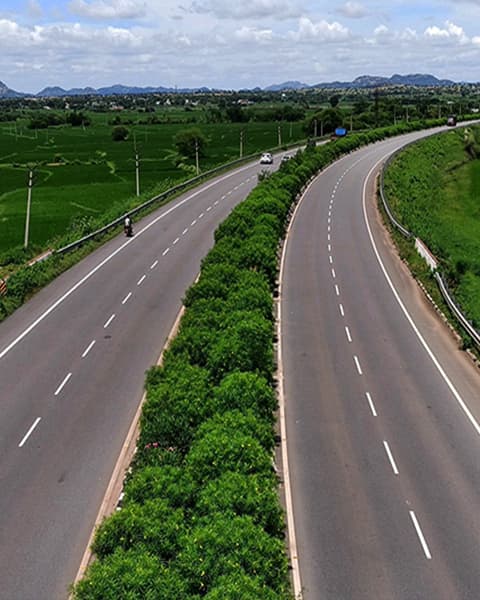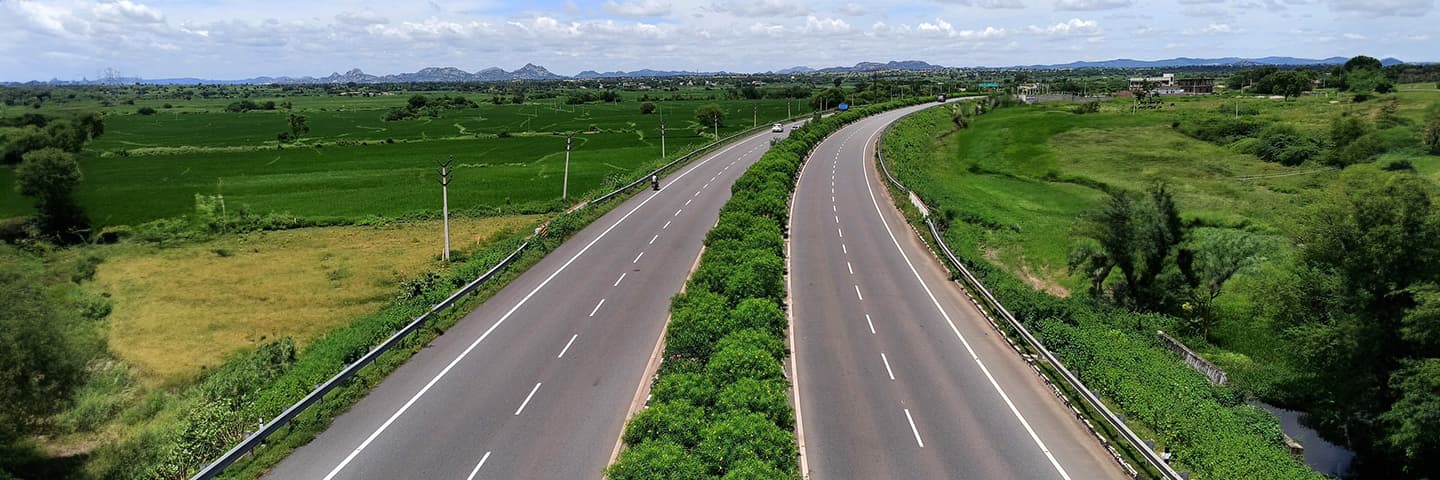Number of Lanes
4
Distance
55.7 Km
Original Concession Period
20 Years

The Western Andhra Tollways Private Limited (WATPL) operates a 55.7 km (2 km descoped) 4-lane highway on NH 44 in the state of Telangana. NH 44, also known as the North-South Corridor of the National Highways Development Project (NHDP), is officially the longest highway in India, spanning over 4,112 km from Srinagar to Kanyakumari.
WATPL, commonly known as AP 04 Package, serves as a vital artery connecting the major metropolises of Hyderabad and Bangalore, and further on to Chennai. The package also plays a pivotal role in connecting Hyderabad to the Telangana border city of Kurnool.
The project was executed with a concession period of 20 years. It commenced its Commercial Operations Date (COD) on March 14, 2009, and is set to conclude its concession period on August 19, 2026. The project sees a daily traffic volume of 41,804 Passenger Car Units (PCU).
Commercial vehicles make up 60% of the traffic on the project highway, while passenger vehicles account for the remaining 40%. In terms of revenue, commercial vehicles contribute 68%, and passenger vehicles contribute 32% to the project's revenue.
The project maintains several critical infrastructure elements, including 2 flyovers, 5 major bridges, 22 minor bridges, 6 pedestrian underpasses, 3 vehicular underpasses, 1 railway overbridge (descoped), and 1 tunnel at the toll plaza.
Benefits of the Project Road
Enhanced Connectivity: This project plays a crucial role in connecting the two major thriving metropolises of Hyderabad and Bangalore, further extending connectivity to Chennai. It serves as a vital vein of connectivity between North and South India, facilitating the movement of people and goods, particularly in the context of the booming IT and startup sectors in these regions.
Improved Safety: Safety measures have been a priority for the project, with the installation of additional safety signage, solar blinkers, and thermoplastic paints at 14 identified black spot junctions, in collaboration with NHAI and local authorities. Continuous safety awareness sessions and drives have been conducted to educate the local population and youth, promoting safer road use.
Reduced Travel Times: The modernization of the project road has significantly reduced travel times for both daily commuters and long-haul transportation, increasing travel efficiency and reducing fuel consumption. This not only saves time but also contributes to cost savings and environmental benefits.
Economic Growth: The improved road infrastructure has attracted investments and stimulated economic growth by making the region more accessible to businesses. This has led to job creation and increased economic opportunities for local communities, ultimately enhancing their quality of life.
Impact on Road Users
Commuters: Commuters now enjoy shorter travel times and increased safety, which significantly improves their quality of life. Reduced travel times and enhanced safety measures make daily commuting more efficient and secure.
Truck Drivers: Long-haul truck drivers benefit from decreased transit times and lower operating costs, which boost the efficiency of the logistics industry. This not only reduces transportation costs but also ensures more timely and reliable deliveries.
Tourists: Improved road conditions have made the region more appealing to tourists, leading to increased tourism and greater support for local hospitality businesses. The region has become a more attractive destination for tourists, which has a positive economic impact on the local tourism sector. This, in turn, leads to increased economic opportunities for the local community.
Impact on Communities
Economic Development: The project, which connects two major metros, Bangalore and Hyderabad, serves as a crucial artery for the transit of various commodities used in construction, manufacturing, agriculture, and groceries. With agriculture, construction, and groceries accounting for significant proportions of transit (21%, 19%, and 20%, respectively), the project plays a pivotal role in supporting economic activities in these sectors, contributing to economic growth and development.
Employment Opportunities: The project has created job opportunities for residents, ranging from construction and maintenance to associated works related to project development and maintenance activities, including toll operations. These job opportunities are invaluable for the local workforce, supporting livelihoods and enhancing their economic prospects.
Infrastructure Development: The project has catalyzed the development of ancillary infrastructure, such as hotels, restaurants, and service stations, providing convenience to road users and benefiting local entrepreneurs. The growth in infrastructure enhances the overall travel experience while stimulating local business growth.
Environmental Impact: The project has made substantial strides in environmental sustainability. By converting to 100% LED lighting and implementing 96 rainwater harvesting points replenishing approximately 10,621 cubic meters of water, the project demonstrates a strong commitment to environmental preservation and sustainable practices. The project features an impressive 48,577 avenue plantations and 37,812 median plantations, averaging around 1398 avenue plants per kilometre and 870 median plants per kilometre. These plantations not only enhance the visual appeal but also contribute to environmental sustainability.
Accolades
The project has been certified under six ISO certification categories:
- ISO 9001:2015 Quality Management System
- ISO 14001:2015 Environmental Management System
- ISO 39001:2012 Road Traffic Safety Management System
- ISO 45001:2018 Occupational Health and Safety Management System
- ISO 31000:2018 Risk Management
- ISO 27001:2022 Information Security and Management System
Western Andhra Tollways Private Limited (WATPL)
CIN: U45203TN2005PTC057931

